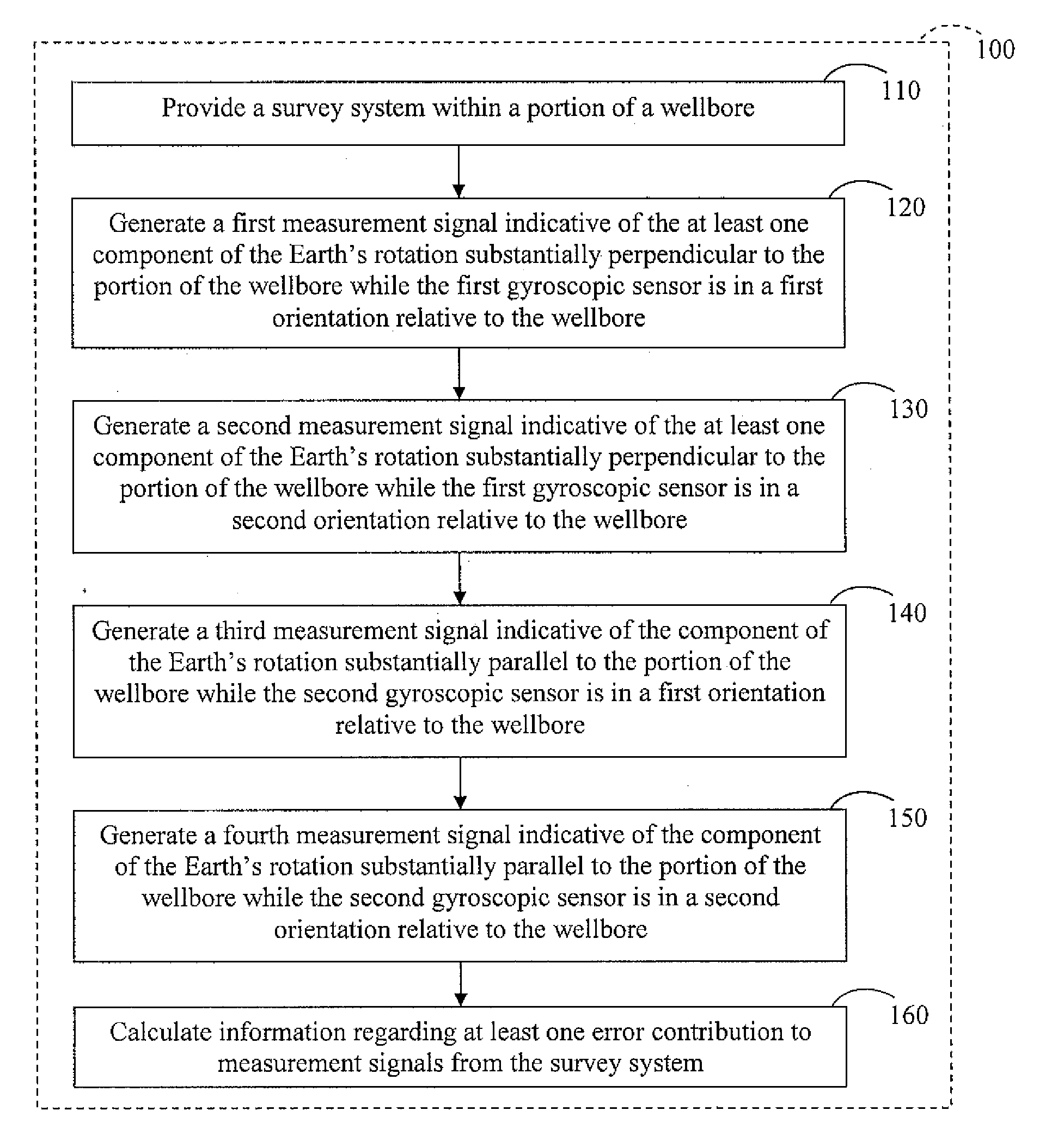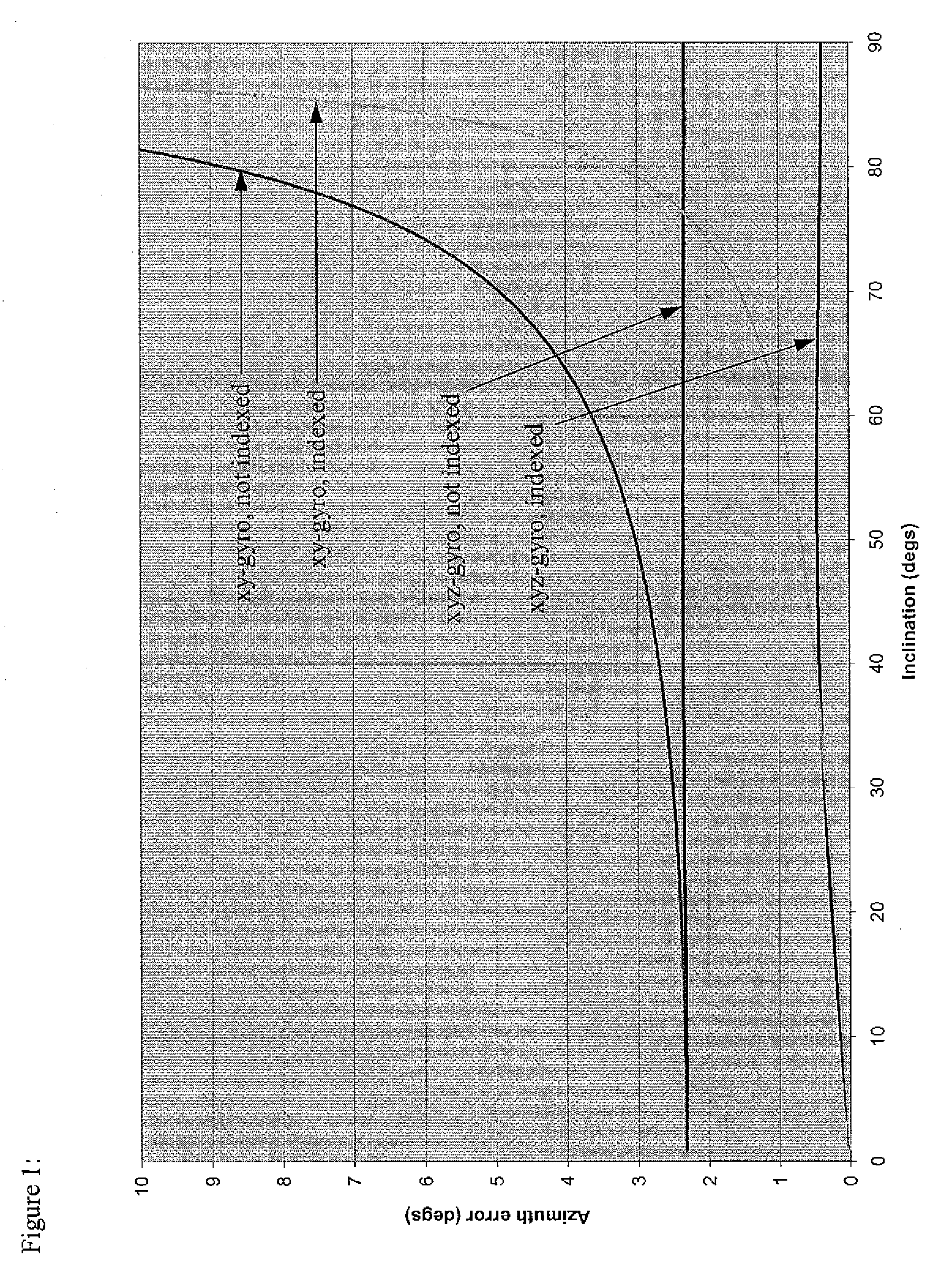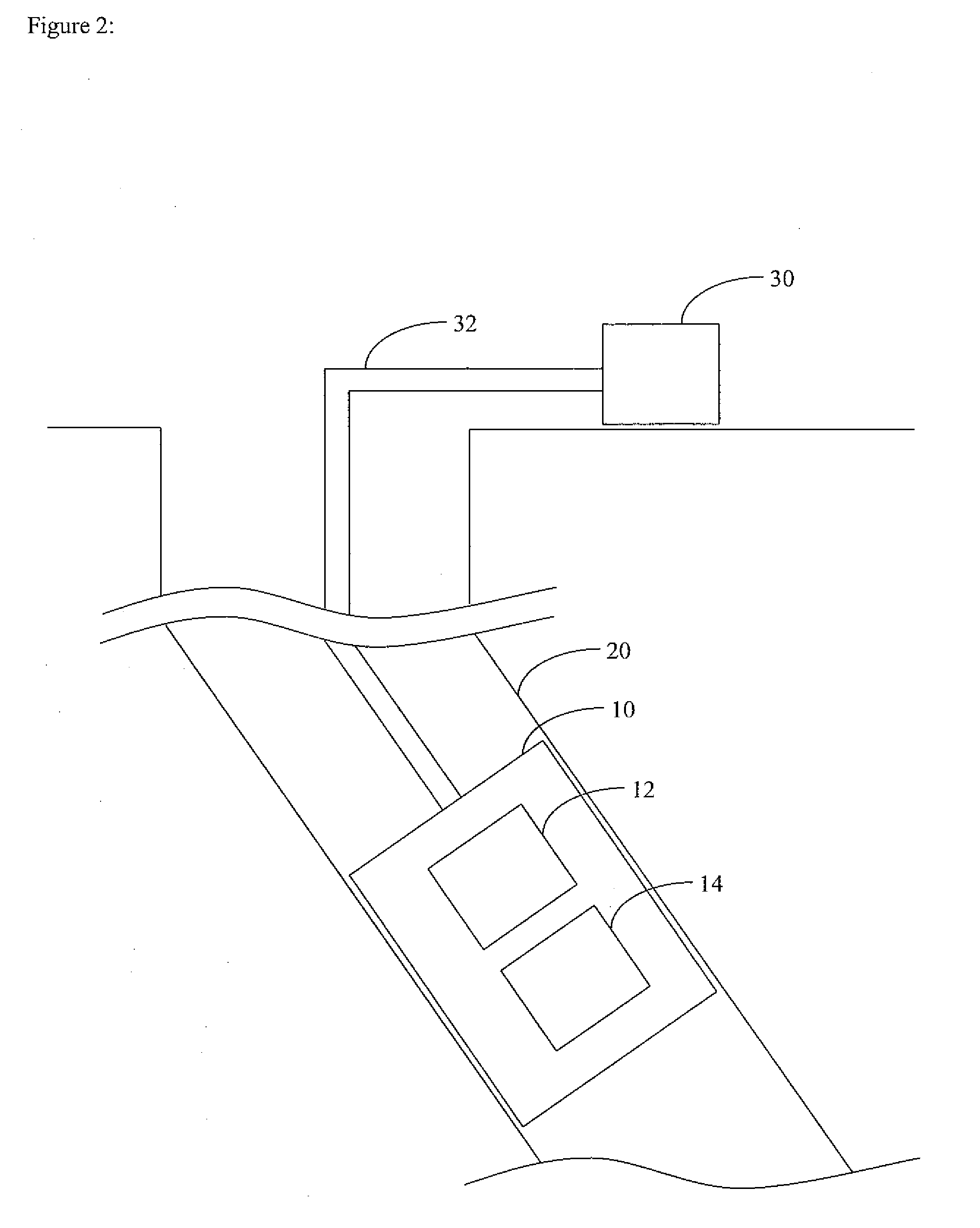Reducing error contributions to gyroscopic measurements from a wellbore survey system
a wellbore survey and gyroscopic measurement technology, applied in the field of reducing error contributions to gyroscopic measurements from a wellbore survey system, can solve the problem that the process takes considerably longer to implement without the facility to index the gyro, and achieve the effect of reducing error contributions, reducing error contributions, and reducing errors
- Summary
- Abstract
- Description
- Claims
- Application Information
AI Technical Summary
Benefits of technology
Problems solved by technology
Method used
Image
Examples
Embodiment Construction
[0022]There is an increasing demand for high accuracy surveys of highly deviated and extended reach wellbores. For example, modern survey systems may operate at any attitude, e.g., at 90 degrees inclination and beyond in horizontal extended reach wells, and high accuracy surveys in such wellbores are desirable.
[0023]While the two-axis strapdown system outlined above provides accurate estimates of wellbore azimuth in a near vertical well, this accuracy degrades as inclination increases, with the azimuth becoming indeterminate due to a singularity in the calculation at 90 degrees inclination. To overcome this limitation, an additional rotation rate measurement about the along-hole or longitudinal (z) axis of the survey tool can be performed.
[0024]While down-hole gyro survey systems incorporating a strapdown gyro mounted to provide the necessary z-axis measurement already exist, there is a need for a sensor configuration that will allow the sensor system to establish the direction of t...
PUM
 Login to View More
Login to View More Abstract
Description
Claims
Application Information
 Login to View More
Login to View More - R&D
- Intellectual Property
- Life Sciences
- Materials
- Tech Scout
- Unparalleled Data Quality
- Higher Quality Content
- 60% Fewer Hallucinations
Browse by: Latest US Patents, China's latest patents, Technical Efficacy Thesaurus, Application Domain, Technology Topic, Popular Technical Reports.
© 2025 PatSnap. All rights reserved.Legal|Privacy policy|Modern Slavery Act Transparency Statement|Sitemap|About US| Contact US: help@patsnap.com



